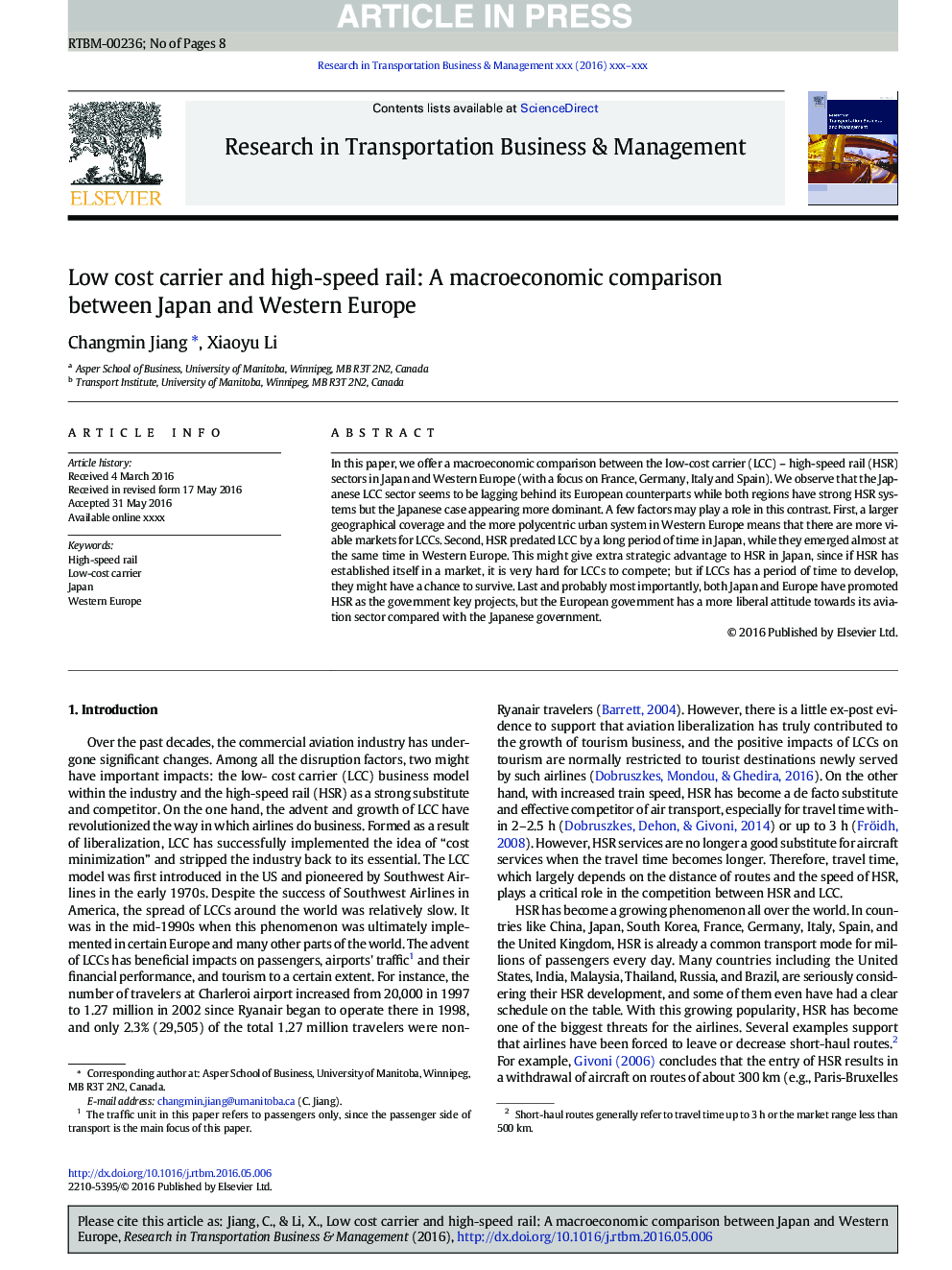| Article ID | Journal | Published Year | Pages | File Type |
|---|---|---|---|---|
| 5106696 | Research in Transportation Business & Management | 2016 | 8 Pages |
Abstract
In this paper, we offer a macroeconomic comparison between the low-cost carrier (LCC) - high-speed rail (HSR) sectors in Japan and Western Europe (with a focus on France, Germany, Italy and Spain). We observe that the Japanese LCC sector seems to be lagging behind its European counterparts while both regions have strong HSR systems but the Japanese case appearing more dominant. A few factors may play a role in this contrast. First, a larger geographical coverage and the more polycentric urban system in Western Europe means that there are more viable markets for LCCs. Second, HSR predated LCC by a long period of time in Japan, while they emerged almost at the same time in Western Europe. This might give extra strategic advantage to HSR in Japan, since if HSR has established itself in a market, it is very hard for LCCs to compete; but if LCCs has a period of time to develop, they might have a chance to survive. Last and probably most importantly, both Japan and Europe have promoted HSR as the government key projects, but the European government has a more liberal attitude towards its aviation sector compared with the Japanese government.
Related Topics
Social Sciences and Humanities
Business, Management and Accounting
Business and International Management
Authors
Changmin Jiang, Xiaoyu Li,
